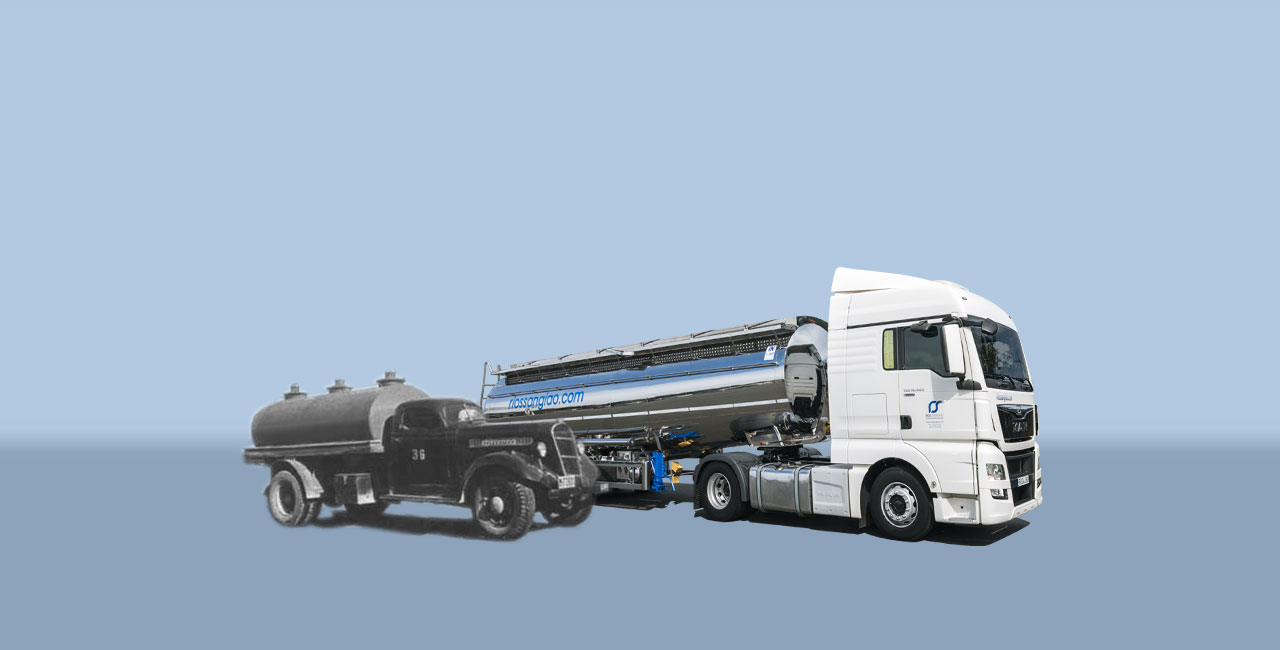
Today we’ll talk about the history of this type of transport. We know that these tanks were created thanks to the improvements of the refrigerated trucks, but how do we do that? And the most interest thing, since when is it done? Road transport is undoubtedly the most widely used form of transport. It is carried out by vans, lorries, etc. But if we have to think about the protagonist par excellence of land transport, it is, without a doubt, the truck. Day after day we see trucks and trucks on the roads. Square, round, small, large trucks, those that transport wood, those that transport animals, those that transport milk… At Rios Sangiao we are specialists in isothermal transport, so today we will talk about the history of this transport model. We know that these tanks were created thanks to the appearance and improvement of refrigerated lorries. But how do we do it, and more interestingly, since when has it been done?
To find out more about the history of these tanks, we must first investigate and analyse refrigerated trucks, and to do so, we must know their history.
In 1877, the American businessman Gustavus Franklin Swift (1839-1903) managed, after several attempts, to develop a transport cooling system in order to keep meat as cold as possible during its movement across the country.
His new transport model consisted of ventilated ice boxes at the ends of the vehicle, which, together with the doors open during the journey, allowed cold air to circulate, thus keeping the meat cold. Despite this, the drivers had to stop every so often to change the ice and it only worked when the weather was cold, as when it was warm the ice would melt.
In 1939, the most important improvement to this process was made by truck executive Henry Werner and a sound system manufacturer, Joseph Numero. While playing golf, they discussed the need to ship meat across the United States without it spoiling. So, Joseph got in touch with inventor Fred Jones to jointly develop a vehicle that would allow meat to be moved without spoiling. It was in the same year that they both received a patent for the mechanical refrigeration device for the vehicle. This device consisted of a portable air conditioning unit that came out of the containers and used the vehicle's engine as a power source.
When the United States enters World War II two years later, this new vehicle, known as the Thermo King, is used to transport food, blood and medicine. This made it possible for many lives to be saved during the war. Later this system would be implemented in other means of transport such as aeroplanes and railways.
Thus, the refrigerated truck made an important leap into conventional transport, because apart from being the best known means of transport for shipping goods, the need to increase the number of refrigerated lorries also arose.
Gradually the Thermo Kings, which were originally small units, became the standard for all trucking companies and with various advances, such as the condenser and evaporator, among them, the trucking industry was able to grow its business.
Today, refrigerated trucks are powered by four components working together, the compressor, the condenser, the evaporator and the control system. These maintain the right temperature inside the cargo compartment, where the goods are stored, so that they do not spoil during the journey.
Isothermal tanks have much the same function: to maintain a suitable temperature inside so that the products being transported do not deteriorate. In contrast to isothermal tanks, refrigerated trucks need to maintain a constant low temperature, whereas isothermal tanks only ensure that the outside temperature does not mix with the temperature inside the tank.
Thanks to this American invention, it was possible to develop a method of transport that is indispensable today, allowing us to transport products that require an optimum temperature to keep them in good condition, such as, in our case, wine, oil, milk, cream and juice, while maintaining the same and only objective: that they arrive at their destination in the best possible conditions.



This has been the work of Sr. Concejo

